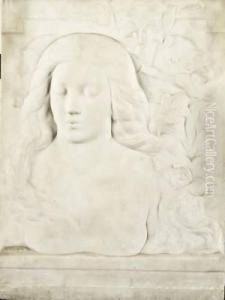Albert Marque Paintings
Albert Marque was a remarkable French sculptor and doll maker whose work is celebrated for its significant influence on 20th-century art. Born on March 14, 1872, in Nanterre, Hauts-de-Seine, Marque began his artistic journey at a young age, showing great potential in the arts. His talents were not confined to a single medium; he initially gained recognition for his sculptural works, which showcased his acute understanding of form and his ability to capture the human figure with sensitivity and grace.
Marque studied at the École des Beaux-Arts in Paris and was a contemporary of other renowned artists such as Pierre-Auguste Renoir and Auguste Rodin, who were also working in France at the turn of the century. Despite the prevailing styles of the time, which included Art Nouveau and later Art Deco, Marque developed a distinct approach that leaned towards a more classical and realistic representation.
During World War I, Marque's artistic career took an unexpected turn when he began creating dolls. These were not ordinary toys, but highly sought-after works of art, meticulously crafted with extraordinary attention to detail and expression. His dolls became famous for their delicate beauty and lifelike quality, capturing the hearts of collectors and influencing the world of doll making.
After the war, Marque returned to sculpture, which remained his primary passion. His works were recognized for their emotional depth and exquisite craftsmanship. Marque’s sculptures often depicted women and children, subjects that he portrayed with a tender and emotive touch that was rare for his time.
Albert Marque passed away on July 4, 1947, in Cannes, France, leaving behind a legacy that has continued to earn him posthumous acclaim. Today, his sculptures and dolls are highly prized by collectors and are considered important contributions to the field of art. In the world of auctions, Marque's dolls, in particular, have fetched record prices, underscoring the enduring appeal and importance of his artistic achievements. His influence can be seen in the works of later artists, and his pieces are held in numerous private collections and museums around the world.


